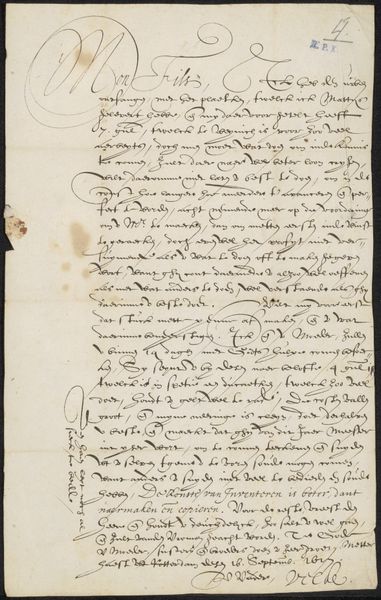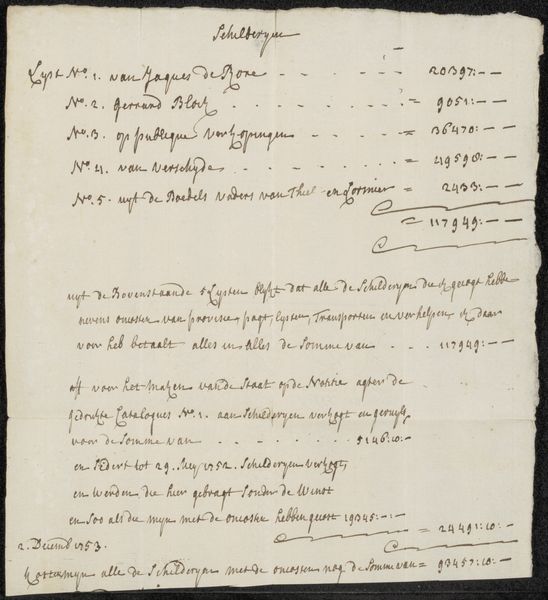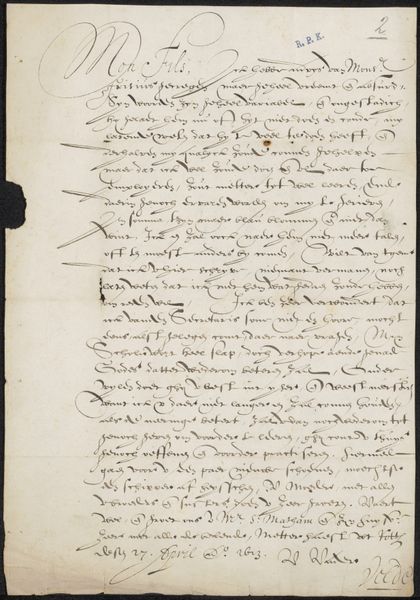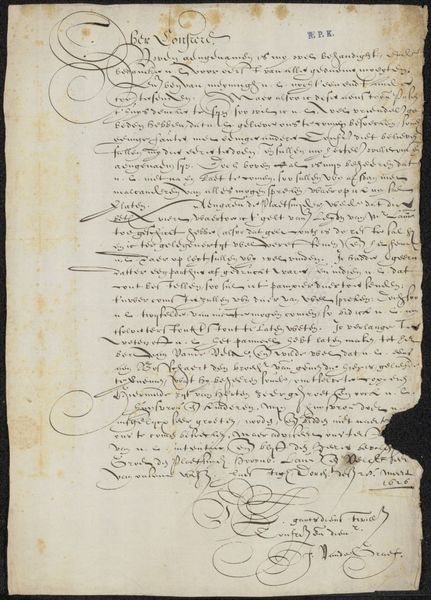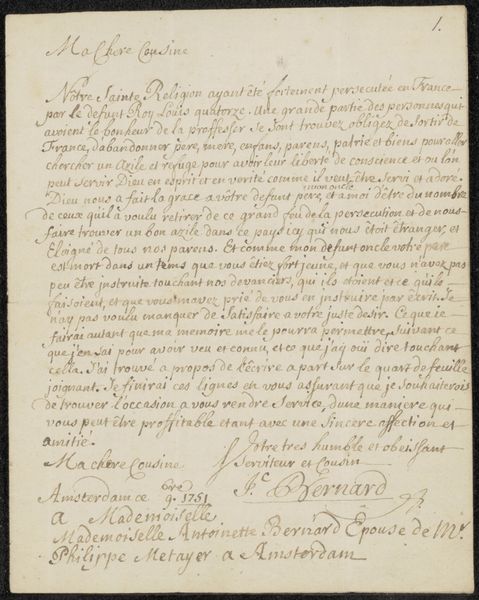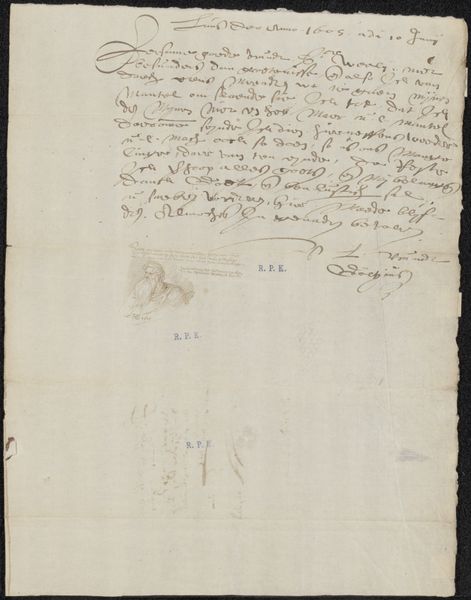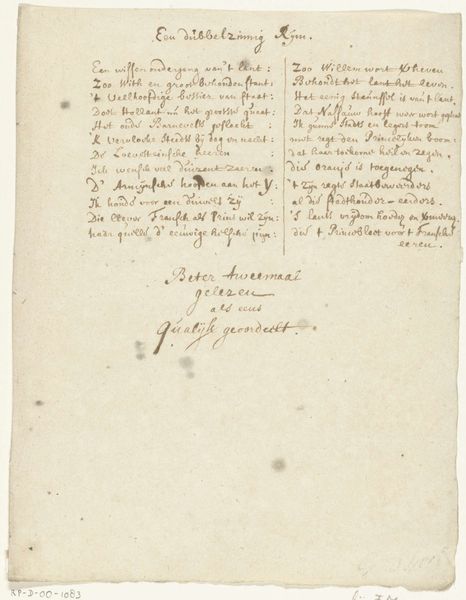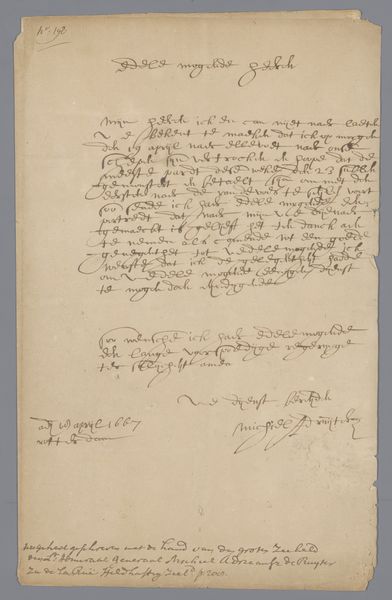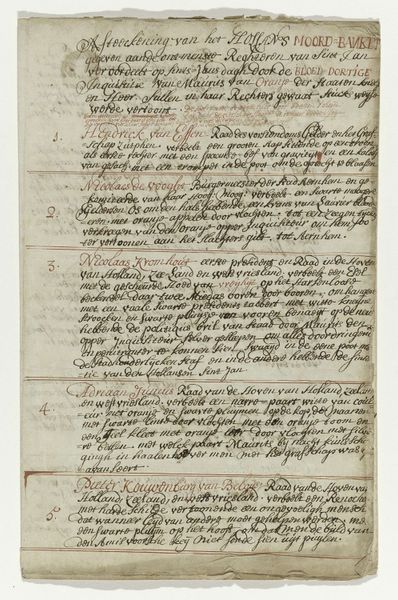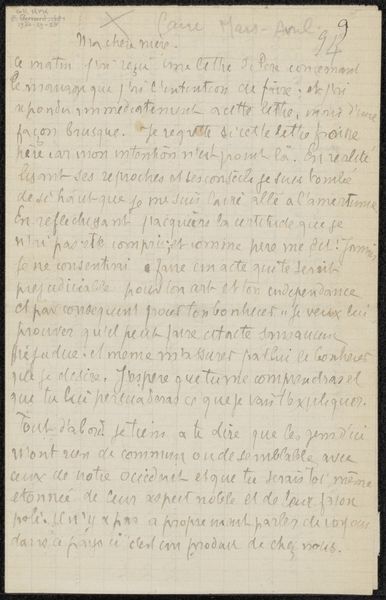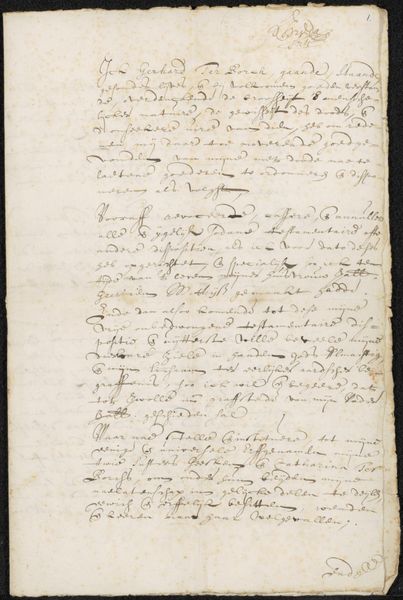
Notariële akte met betrekking tot Romeyn de Hooghe (1655-1704) en zijn voormalige voogden Possibly 1683
0:00
0:00
drawing, paper, ink, pen
#
drawing
#
comic strip sketch
#
baroque
#
sketch book
#
hand drawn type
#
paper
#
personal sketchbook
#
ink
#
idea generation sketch
#
pen-ink sketch
#
pen work
#
sketchbook drawing
#
pen
#
history-painting
#
storyboard and sketchbook work
#
sketchbook art
Copyright: Rijks Museum: Open Domain
Curator: Before us, we have a historical drawing likely dating back to 1683, entitled "Notariële akte met betrekking tot Romeyn de Hooghe (1655-1704) en zijn voormalige voogden," which translates to "Notarial Deed Regarding Romeyn de Hooghe and his Former Guardians". Editor: It feels immediate, raw. Just dense script filling a brittle sheet. A sense of urgency and secrets whispers from it. It looks more like a hastily scribbled note rather than a formal record. Curator: As a notarial act, it likely served as legal documentation regarding the artist Romeyn de Hooghe. Think about the implications of this as a primary source; legal acts often illuminate social structures and power dynamics of the time. Editor: That ornate, almost labyrinthine signature at the bottom certainly conveys power, though! The symbols intertwined with the calligraphy suggests the enduring symbolism attached to signatures – their unique essence represents something. Is this something more of a logo than a legal symbol? Curator: Perhaps. These documents often served multiple purposes, asserting power through the written word. The guardians are central to this, and who held authority in De Hooghe's younger years undoubtedly shaped his trajectory as an artist and political satirist. Consider also that he came from a prominent family with connections to civic and legal spheres; this note connects to that legacy. Editor: It's interesting how the script itself becomes an emblem. The dense writing almost forming a texture, gives the impression of something essential. What I find appealing is thinking how specific phrases were chosen, how they resonate beyond pure legality – how they function almost as charms and continue the tradition of the era to use visual text to carry a talisman-like function. Curator: Absolutely, and the context of baroque style brings this to life. While it appears simple, it speaks to layers of power and the importance of historical context. It highlights how social contracts influenced an artist’s life, which later channeled his artistic visions and satirical work. Editor: Yes, it prompts reflection about hidden meanings and the human intent crystallized through pen and ink – legalities, sure, but so much more that time carries forward. Curator: For me, it deepens our view of De Hooghe, situating him not just as an artist but as a subject navigating a world defined by legal structures. Editor: I walk away pondering not just legality but the symbolic weight assigned through visual cues that extend into the emotional realm.
Comments
No comments
Be the first to comment and join the conversation on the ultimate creative platform.
